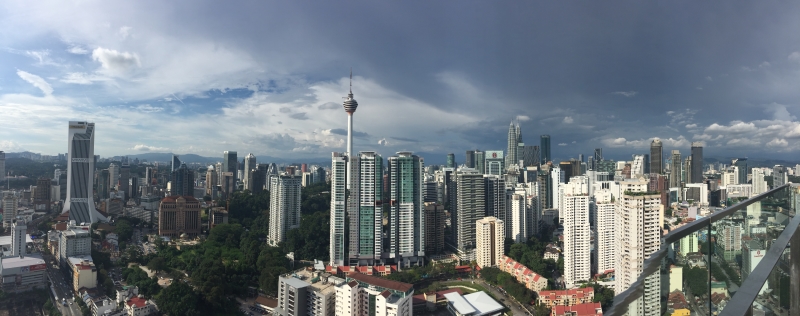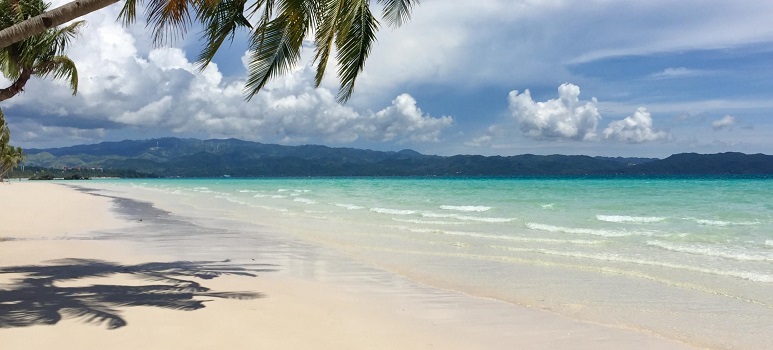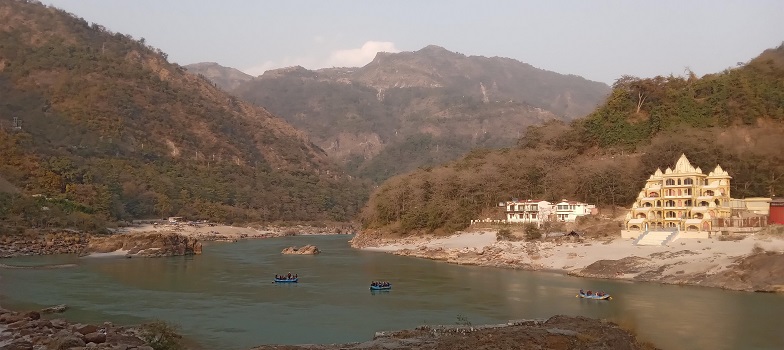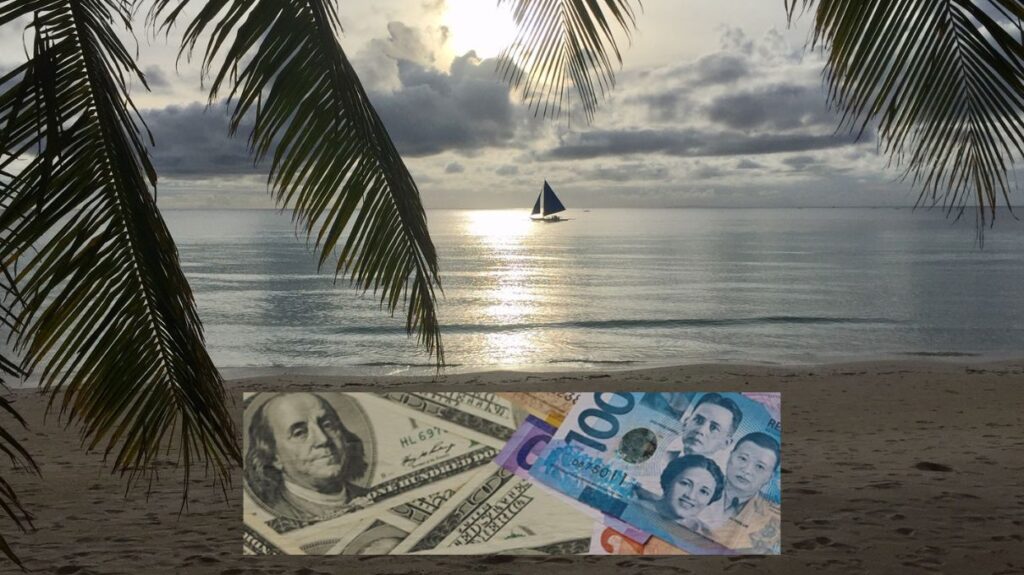So you’re ready for global budget travel, but you don’t know where to start? This is the post for you! Through personal experience, I’ve picked out the three best countries in Asia for new budget slow travelers in early retirement.
There are great countries all over Earth where you could start. Like Mexico or Guatemala in Latin America, or Portugal or Bulgaria in Europe. But if you want to really do it on the cheap without feeling like you’re living cheap, then Asia has the best deals on the planet.
We rent moderately-priced apartments on Airbnb for four weeks to get a monthly discount. For each country listed, I have provided past posts with video tours of our favorites, which also have links to their listings on Airbnb (or the occasional hotel). Note: there’s no guarantee you’ll get the same price we did.
Related: How to budget slow travel with Airbnb
If you’re new to this site, we like to point out we are ‘independent’. There are no ads here, we do not work with sponsors or affiliates, and we don’t use AI. We are experiential only. What’s in it for us? Nothing, other than we hope to inspire Americans (and other westerners) that living a travel lifestyle is possible on 2k or 3k per month for a couple.
Also please note: visa information on this list of best countries in Asia for new budget slow travelers is for American citizens (including the short list for honorable mentions). However, I’ve listed links for official immigration websites, so non-Americans can also benefit.
3 Best Countries in Asia for new budget slow travelers
1- Malaysia
Malaysia is my top pick for newbies. It is more expensive than the next countries on this list, but it’s still a bargain for budget slow travelers coming from America or other Western nations. Malaysia might be the best pick on this list for new budget slow travelers who want a ‘soft start’.
Transportation around the country Malaysia easy and inexpensive. There’s fine dining – and also cheap eats at hawker centers.
Malaysians are kind, and open-minded Americans will appreciate its diverse ethnic groups – it’s like a melting pot with Malays and Chinese, Muslims and Hindus and Christians. No trouble finding English virtually everywhere because it’s a former British colony. We have been to Malaysia multiple times and have our favorite spots – but we will return again because we haven’t seen everything yet!
Health care is top notch, especially in Kuala Lumpur at private hospitals. However, foreigners will be charged more than locals. We jokingly call this a ‘skin tax’. Still, it’s relatively inexpensive in our experience, compared to American costs. Quick example: see an itemized bill for a broken wrist reset under anesthesia. (Hey, accidents happen!)

Americans can visit visa-free for up to three months. That hasn’t changed in years, still, it’s always best to visit the official immigration site for all requirements. It’s easy to hop on a train and cross the border to Thailand, another one of our favorite countries in Asia (but didn’t quite make this list).
Downsides to Malaysia
- Housing costs more than other Asian countries
- Most Malaysian cities (except for Kuala Lumpur) are not pedestrian friendly
- Everyone has a car in Malaysia, which makes for major traffic jams
- A generous tourist visa policy, but not as long as the other two countries left on this list
Airbnbs we recommend in Malaysia:
2- Philippines
My second pick for newbies is the Philippines. Overall, the value for your money is fantastic, and some English is pretty common. It has more than 7,000 islands and wonderful people. Food (including abundant produce) is cheap by Western pricing; transportation is cheap — and fun! You island hop by ferry in many areas.
We spent our pandemic years in Malay, Aklan Province, on Panay Island. Malay township includes the world-famous beach on Boracay Island.

I had good experiences with health care in the larger cities of Cebu and Iloilo. Smaller cities – like Kalibo, Aklan capital – have decent care. You will not have specialty needs met or serious issues resolved in rural areas.
Americans don’t need a visa for the first month. And get this: Americans can stay up to three years! From the Bureau of Immigration: “… non-visa required national may extend their stay up to thirty six (36) months.”
Yep. That’s right — three years (!). Just know that the extensions can be an involved monthly process at an immigration office, involve something called an “ACR card” (for $100) and each day you stay costs roughly the equivalent of a dollar a day (as of this writing). See the official rules here.
Downsides to the Philippines
- Visa policy is a hassle and is relatively expensive compared to other countries
- Western favorite foods can be hard to find
- Quality and specialty healthcare are limited to the crowded, polluted, large cities
Airbnbs we recommend in the Philippines
- Malay
- Gigantes Islands (post has a link to a hotel)
Sadly, the pandemic changed things for many of our hosts in the Philippines, and most of the places where we stayed are no longer available – including the apartment near Boracay.
3- India
India is number three on this list, but it’s not for everyone. I almost went with Thailand here – a favorite for most seasoned budget slow travelers. So why Earth am I telling newbies of budget slow travel to go to India? Here me out.
First, the value for the money is second to none. Also, if you can travel around India (which is cheap and easy), and if you can handle all the humanity on display in this great nation, you’ll be rewarded with some of the best travel memories of your life. It is safe, cheap, full of adventure and kind people. And unless you apply for a stay before you leave the U.S., Americans only get two months maximum in Thailand, whereas India gives you six months (more on this below).
Western quality housing is higher in India than other Asian destinations because it is the most populated country on the planet. But you can still find good deals on month-long rentals with modern amenities. Some of our favorite Airbnbs are listed below.
While housing might be high, food (including abundant produce), and transportation cost so little compared to other countries, that it balances out.

Health care is unbelievably cheap compared to America – and it’s quality care. Quick example from experience: we had colonoscopies scheduled just two days in advance in a private hospital for the low price of $160 – with no insurance.
One of our monthly budget breakdowns from India will give you an idea of what it might cost you.
Mother India is a varied country. Each section of the subcontinent almost feels like a different country. There are the deserts of Rajasthan, the beaches in Goa, mega cities like Mumbai, Kolkata, Delhi, Chennai, and Himalayan communities like Rishikesh.
Americans can stay in India for six months total each calendar year. Note: the online eVisa application is tedious, but easy if you follow the directions on the official Indian immigration site. Once in India, you can travel around by train (book trains early!) or by domestic flights (if you must), the latter reasonably priced.
Downsides to India
- India has a horrific garbage problem in many places
- Poverty and free-roaming cows (and dung) can be overwhelming
- Public bathrooms are … unpleasant
Airbnbs we recommend in India:
We stayed at other places for times shorter than one month in North Goa, South Goa, Kolkata, Mubmai, Delhi, Jaisalmer, Jodhpur, Varanasi, Agra, Dehradun, Pushkar, Udaipur, Alibag, Bundi, Kota, Pune, Bodhgaya, Aleppey, and Mahabilapuram. For those accommodation recommendations, contact us.
India is sort of like its own world. Many travelers take a ‘love it or hate it’ attitude towards India. As spouse Theo says: India is the most foreign-feeling place we’ve ever been. For that reason, I say: go for it! Just know it’ll be a wild time you won’t ever forget.
So to help you further, I put together a free guide on how to slow travel in India.
English
My top three best bargain countries for new budget slow travelers in Asia all have many English speakers. In India, there will not be much, if any, English in rural areas. Same with the Philippines – but you’ll easily find it in big cities. In Malaysia, as I mentioned earlier, English is just about everywhere.
In fact, lack of English is one reason Thailand and Vietnam are not on this list for new budget slow travelers, yet these countries absolutely deserve a visit!
Notable mentions
Notable mentions for great bargains include Thailand, Vietnam, and Indonesia. However, these countries are for more advanced travelers who can navigate without English everywhere. Prices are low, but health care is iffy, in my personal experience. Quick example: a distracted driver hit me as I rode a bicycle in Hua Hin, Thailand, and the emergency room doctor spoke barely basic English. (I had my wrist reset in Malaysia with an excellent doctor fluent in English.)
Thailand tourist visa: 90 days, but you have to apply before you get to Thailand in their new eVisa program. Otherwise, it’s 29 days on arrival, which you can extend for another 30 at an immigration office. (This is another big reason it didn’t make my top three countries.)
Vietnam tourist visa: 90 days, through its new eVisa program — but note, Vietnam has changed requirements and lengths of stays in the last few years, so it’s best to check with the Vietnamese immigration department.
Indonesia tourist visa: 90 days through eVisa program. Otherwise, 60 days on arrival, according to the Indonesian immigration site. This country also has changed rules often, so be sure to check yourself.
As with all itinerary planning, always check for the latest immigration rules and fees on official websites — not services that look official, and that will charge you huge money for applications.
Higher-priced notables
For those who have higher budgets, honorable mentions go out to South Korea, Taiwan, and Japan. Our budgets were $3,000 per month for couples instead of $2,000.
As always, housing is the highest cost, but food was higher, too. Much of the produce is shipped in. Transportation will be about a buck a ride on buses and subways in Japan and Korea, while well under a dollar in Taiwan.
What are you waiting for?
Budget slow travel in Asian countries is easy for adventurous new budget slow travelers. With lower prices than the America, decent-to-great length-of-stay options, exotic cultures, and decent-to-great health care — you can’t go wrong starting your own world tour in any of these places.
In the spirit of offering even more inspiration, I leave you with these helpful posts:
- Is long-term travel for you?
- Living in Airbnb units around the world
- What is ‘onward travel’ proof and how do you get it?
- How to plan a budget slow travel itinerary
- Make every day a holiday
- How we retired early to travel the world
- 4 early retirement steps you can take right now
See also an older post with specific cities (pre-pandemic prices): Best places to slow travel overseas on small budgets (think: smaller social security checks).
Afraid of health care overseas? Don’t be!
Our special guide on global health care shows you:
- 7 easy steps to find the right doctors and hospitals
- Specific price examples for various medical services
- What to know about medical visas
- And more!
We go without travel health insurance, but many of the principles apply to those with coverage.
Thanks for reading, “3 Best Countries in Asia for new budget slow travelers.”
About Ellen

Ellen and spouse Tedly started a budget slow travel lifestyle in 2015. She was diagnosed with early-stage breast cancer while traveling in Europe in 2018 through an annual mammogram. She had a double mastectomy in Croatia, recovered from surgery, and kept traveling.
As a recovered alcoholic, Ellen seeks out spiritual growth opportunities in a variety of ways during her travel life, including service work, volunteering, and the occasional silent meditation retreat.

